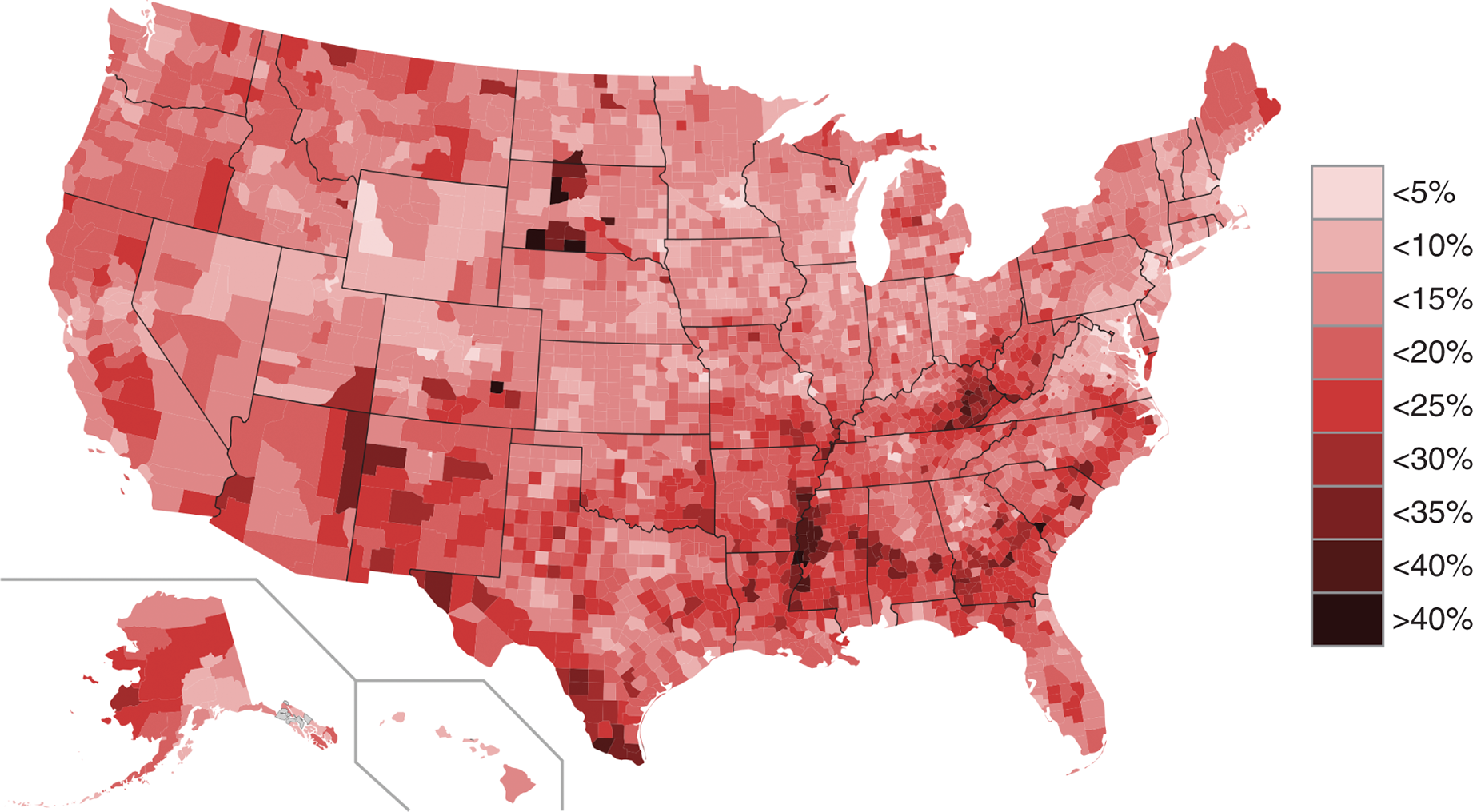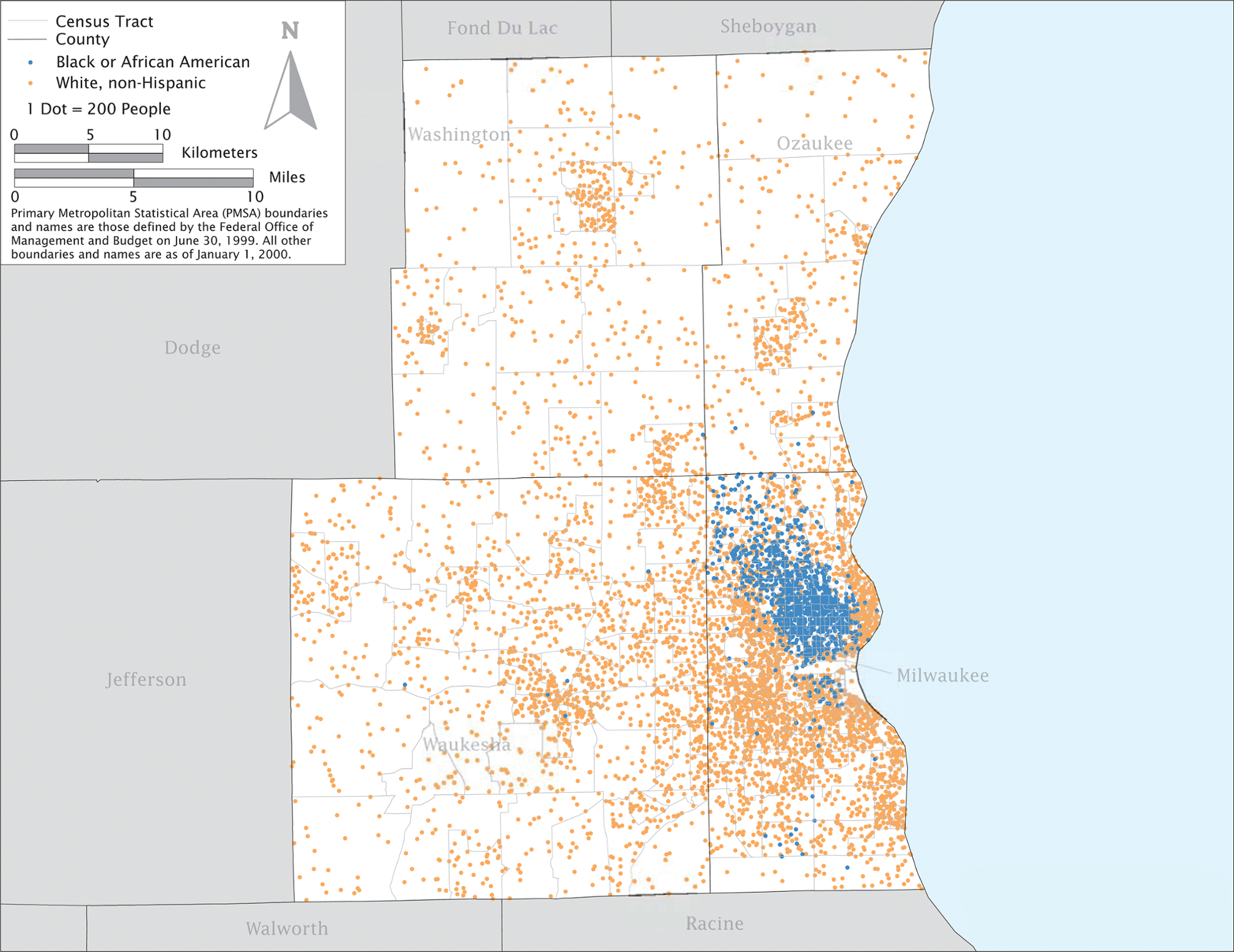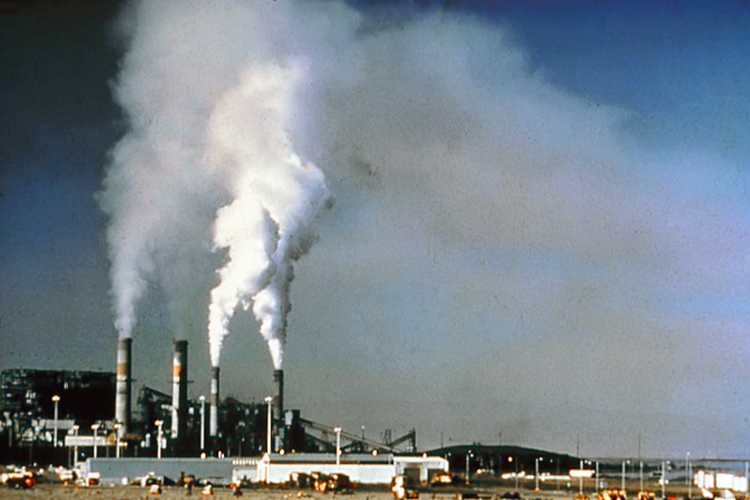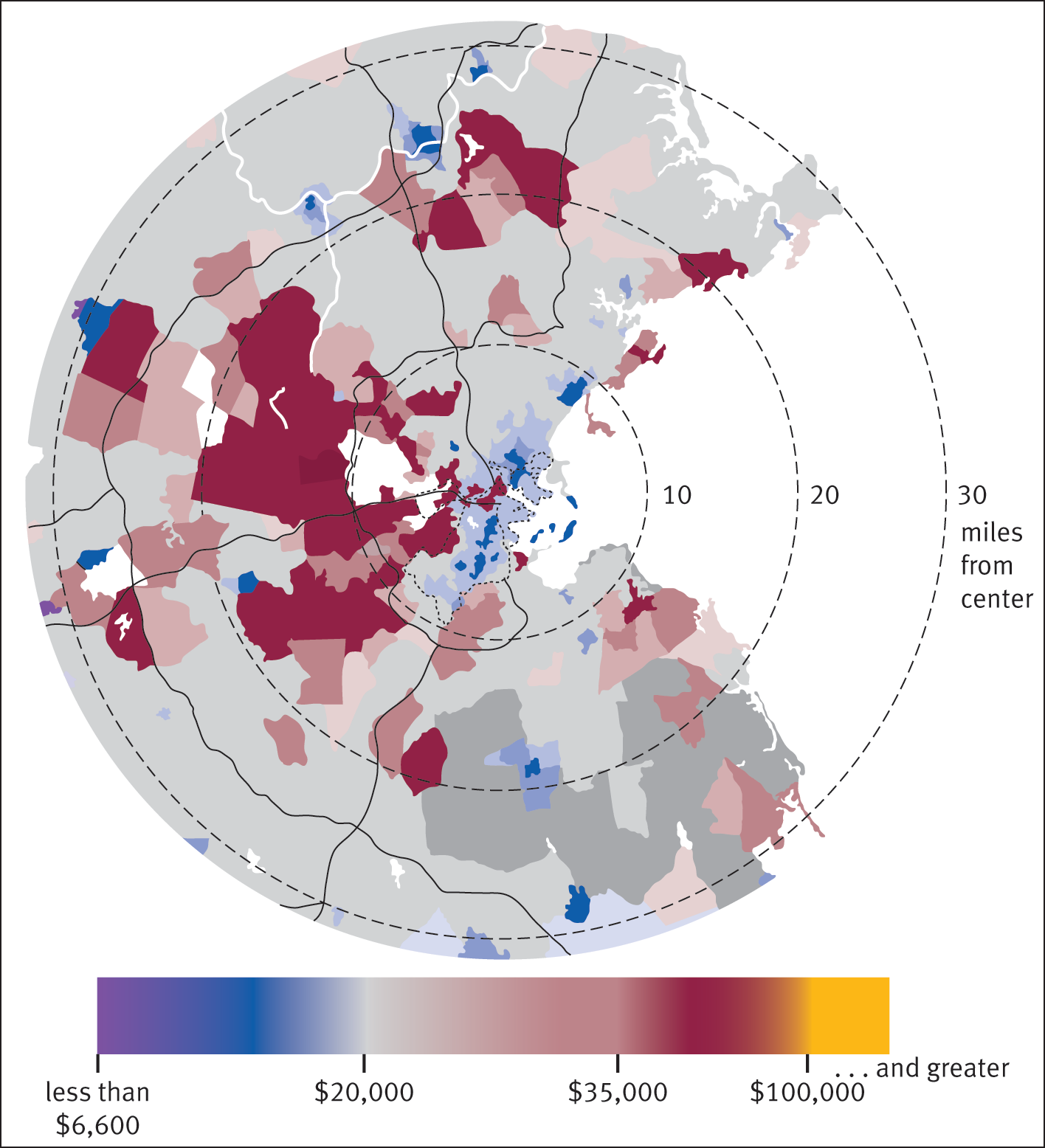
After Chapter 12.1, you will be able to:
Social class is defined as a category of people who share a similar socioeconomic position in society. This can be identified by looking at the economic opportunities, job positions, lifestyles, attitudes, and behaviors of a given slice of society.
Social stratification focuses on social inequalities and studies the basic question of who gets what and why. Social stratification is thus related to one’s socioeconomic status (SES), which may depend on ascribed or achieved status. Ascribed status derives from clearly identifiable characteristics, such as age, gender, and skin color; achieved status is acquired via direct, individual efforts. In other words, ascribed status is involuntary, while achieved status is obtained through hard work or merit. Caste and estate systems stratify by ascribed SES, while class systems stratify by achieved SES. After breaking free from British colonial rule, the United States moved toward a class-based system of social stratification.
It’s important to keep in mind that socioeconomic status is not only determined by merit (achieved status), but also external characteristics or outward appearances like skin color and gender (ascribed status).
There are three major types of status: ascribed, achieved, and master status. While ascribed and achieved statuses are described here, remember that a master status is one that pervades all aspects of an individual’s life. The role of statuses in social interaction is discussed in Chapter 9 of MCAT Behavioral Sciences Review.
There are three major classes—upper, middle, and lower—although these vary to different degrees in different locations. The upper class consists of those who have great wealth, along with recognized reputations and lifestyles, and have a larger influence on society’s political and economic systems. In other words, the upper class has a high concentration of prestige and power. The middle class can be further divided into three levels: upper, middle, and lower. The middle class includes successful business and professional people (upper-middle), those who have been unable to achieve the upper-middle lifestyle because of educational and economic shortcomings (middle-middle), and those who are skilled and semiskilled workers with fewer luxuries (lower-middle). The lower class is at the poorer end of the economic spectrum, with a greatly reduced amount of sociopolitical power.
Prestige refers to the amount of positive regard society has for a given person or idea. Certain occupations, such as physicians, are broadly viewed with high levels of respect and importance. Particular educational institutions, organizations, awards, and accolades may also be considered prestigious.
Power can be described as the ability to affect others’ behavior through real or perceived rewards and punishments, and is based on the unequal distribution of valued resources. At its core, power defines the relationship between individuals, groups, and social institutions. Power relationships function to maintain order, organize economic systems, conduct warfare, and rule over and exploit people. As a result, power creates worldwide social inequalities as people tend to fall somewhere within the haves and the have-nots.
Marxist theory proposes that the have-nots, called the proletariat, could overthrow the haves, called the bourgeoisie, as well as the entire capitalist economy by developing class consciousness. Class consciousness refers to the organization of the working class around shared goals and recognition of a need for collective political action. By working together as one unit, the proletariat could revolt and take control of the political and economic system, laying the groundwork for a socialist state. The one major barrier to class consciousness, however, is false consciousness, a misperception of one’s actual position within society. Members of the proletariat either do not see just how bad conditions are, do not recognize the commonalities between their own experiences and others, or otherwise are too clouded to assemble into the revolutionaries Marx envisioned.
In the modern, globalized world, capitalist economics has led to an increase in social inequality, a reduction in social cohesion, and a waning of social capital. Early sociologists explained that social inequality is further accelerated by what is called anomie. Anomie refers to a lack of social norms, or the breakdown of social bonds between an individual and society. Strain theory focuses on how anomic conditions can lead to deviance. Anomic conditions include excessive individualism, social inequality, and isolation; these all erode social solidarity. Other sociologists have focused on the importance of social trust in the proper functioning of civil society. Social trust comes from two primary sources: social norms of reciprocity (I’ll scratch your back if you scratch mine) and social networks. In the past several decades, as society has become more urbanized, self-oriented, and materialistic, associational ties have diminished and consequently have led to a decline in social capital. What is the relationship between social stratification, social capital, and power?
Anomic conditions in postindustrial modern life have accelerated the decline of social inclusion and, as a result, have further obstructed opportunities to acquire social capital.
Essentially, social capital can be considered the investments people make in their society in return for economic or collective rewards; the greater the investment, the higher the level of social integration (peaceful movement into mainstream society) and inclusion. One of the main forms of social capital is the social network. Social networks can create two types of social inequality: situational (socioeconomic advantage) and positional (based on how connected one is within a network and one’s centrality within that network). It is claimed that inequality in networks creates and reinforces privilege, or inequality in opportunity. Moreover, low social capital leads to greater social inequality. If social capital refers to the benefits one receives from group association, cultural capital refers to the benefits one receives from knowledge, abilities, and skills.
Communities are joined together through what are called strong and weak ties. Strong ties refer to peer group and kinship contacts, which are quantitatively small but qualitatively powerful. Weak ties refer to social connections that are personally superficial, such as associates, but that are large in number and provide connections to a wide range of other individuals. Social networking websites—especially those focusing on professional relationships—are examples of groups of weak ties. People without multiple weak ties, such as disadvantaged groups, may find it extremely difficult to contribute to and access social capital.
Those with mental health problems are one of the largest disadvantaged groups to lack both strong and weak ties. People without multiple weak ties may find it extremely difficult to contribute to and access social capital. Due to repercussions of social exclusion, mental health sufferers may find that social capital is out of their reach. Consequently, this group is personally and socially disempowered, further propelling a cycle of exclusion. Social exclusion has huge financial repercussions on healthcare, with greater morbidity rates.
Social stratification, or, more properly, social inequality, remains higher among certain disadvantaged groups than others, including racial and ethnic minorities (specifically Hispanics and African Americans), female-headed families, and the elderly. Think about who you know who may fall into these underprivileged or underserved groups. Your friends? Your relatives? Yourself? Socioeconomic inequalities remain high in America, despite the numerous policies created to encourage equality in the law. As described in Chapter 11 of MCAT Behavioral Sciences Review, this is partially due to intersectionality—the compounding of disadvantage seen in individuals who belong to more than one oppressed group. Some consider this to be the result of the oversimplification of racial categories or overreliance on the five ethnicities model used by the United States Census Bureau and the National Institutes of Health (NIH): white, black, Asian, Latino, and Native American. Some argue that racial and ethnic boundaries are more ambiguous and fluid in our increasingly diverse population. This argument promotes a model that recognizes this state of hyperdiversity, which reimagines our dynamic population as a complex, multicultural, mosaic-like mix of national origin, ethnicity, race, and immigration status. These sociodemographic characteristics, in conjunction with social policies, can either enhance or obstruct social mobility.
Social inequality is more pronounced in racial and ethnic minorities, such as Hispanics and African Americans, female-headed families, and the elderly.
Unlike a caste-based or estate-based system of social stratification, we in America have the ability to move up or down from one class to another. In a class system, social mobility is typically the result of an economic and occupational structure that allows one to acquire higher-level employment opportunities given proper credentials and experience requirements. In the United States, our class system encourages this type of ambition through dedication and hard work. This is often captured in the phrase The American Dream.
Social mobility can either occur within a generation or across generations. Intragenerational changes in social status happen within a person’s lifetime, while intergenerational changes are from parents to children. Many people consider America to be the land of opportunity, where intragenerational and intergenerational mobility can easily occur. However, others argue that this is no longer the case as the gap between the upper class and the middle and lower classes continues to widen. As a result, America’s social inequality is at its highest point in over a century. Therefore, it may no longer be the case that social mobility primarily occurs in a positive, upward direction.
One of the largest factors driving American social mobility has been meritocratic competition or a merit-based system of social mobility. Meritocracy is based on intellectual talent and achievement, and is a means for a person to advance up the social ladder. Given the rising levels of social inequality and concentration of wealth in the United States, some argue that motivation, a strong work ethic, a conscientious drive, and mastery of skills no longer offer opportunities for advancement. Some fear that America’s meritocratic system is quickly becoming a plutocracy, or a rule by the upper classes. Nonetheless, while merit still plays a key role in many segments of society, such as academia, it does not always guarantee positive social mobility.
Social mobility usually occurs one of two directions: up or down. Upward mobility is considered to be a positive change in a person’s status, resulting in a higher position. Downward mobility is the opposite: a negative change in a person’s status, wherein they fall to a lower position. Social mobility is not directly correlated with education, although education can certainly help with achieving upward mobility. Some of the best examples of upward mobility are seen with professional athletes and professional musicians. In addition to education, athletics and music may offer opportunities for disadvantaged individuals to move to a higher social status.
Upward and downward mobility both refer to patterns of vertical mobility, or movement from one social class to another. Horizontal mobility, on the other hand, is a change in occupation or lifestyle that remains within the same social class. For example, a construction worker who switches jobs to work in custodial services or mechanical maintenance has made a shift in occupation but remains in the lower-middle class.
Poverty is defined by low socioeconomic status and a lack of possessions or financial resources. Poverty can be handed down from generation to generation, and can be defined on its own terms or in comparison to the rest of the population.
Social inequality, especially poverty, can be reproduced or passed on from one generation to the next. This idea is referred to as social reproduction. Some consider this to be a culture-of-poverty explanation for social inequality. In other words, the lifestyle of poverty, powerlessness, isolation, and even apathy is handed down from one generation to another as a feature of the society. However, there are many other factors that contribute to poverty, including where one lives and an emphasis on present orientation, in which people do not plan for the future. One theory, that of structural poverty, is based in the concept of "holes" in the structure of society rather than poverty due to the actions of the individual. Proponents of structural poverty argue that the same individuals do not by necessity occupy these "holes" from year to year, but the percentage of a society that falls under the poverty line stays relatively constant due to their existence. To understand how poverty is reproduced, it may be helpful to examine what types of poverty exist.
On an absolute level, poverty is a socioeconomic condition in which people do not have enough money or resources to maintain a quality of living that includes basic life necessities such as shelter, food, clothing, and water. This absolute poverty view applies across locations, countries, and cultures. Poverty can also be defined as relative, in which people are poor in comparison to the larger population in which they live. For example, surviving on a low teaching salary while living in the Upper East Side of Manhattan may very well be considered poor relative to the other wealthy residents.
In the United States, the official definition of the poverty line is derived from the government’s calculation of the minimum income requirements for families to acquire the minimum necessities of life. Poverty is highly related to geography, as can be seen in Figure 12.1. One of the main problems with the official poverty line is that it is not contextualized according to geographic location and, as a result, does not take into account the cost of living in different communities. For example, the price of renting an apartment in a major urban center is much higher than the cost of rent in a rural small town. Some define poverty as a form of powerlessness or a sociological and psychological condition of hopelessness, indifference, and distrust. In other words, poverty can be the result of the inability to control events that shape a person’s life, often leading to a large degree of dependency on others.

In the United States, poverty is determined by the government’s estimation of the minimum income requirements for families to acquire their minimum needs, such as shelter, food, water, and clothing. The problem with this official definition is that it fails to take into account geographical variables that impact the value of money in different locations. Certain areas are more costly to live in than others.
Social exclusion can arise from this sense of powerlessness when poor individuals feel segregated and isolated from society. However, the problem is that this attitude can create further obstacles to achieving self-help, independence, and self-respect. Disadvantaged groups, such as racial and ethnic minorities, can experience magnified feelings of alienation and powerlessness when living in an affluent community. These are similar to anomic conditions, which tend to further accelerate social inequality. Another important factor influencing poverty is the spatial setting of social life.
Where one lives plays a major role in the distribution of valuable resources. Does a person living in an inner-city neighborhood in Mumbai have the same access to water and electricity as someone living in the posh neighborhood of London’s West End? Spatial inequality focuses on social stratification across territories and their populations. Examining space helps to illuminate social inequalities because it attends to how geography influences social processes. Social categories such as gender, ethnicity and race, and class are distributed across spaces differently, as shown in Figure 12.2. In turn, these groups use spaces differently. For example, some cultures consider the home the center of family life, culture, and entertainment, while other cultures may view the home as merely a stop-off point for eating and sleeping while spending most of their time outside of the home.

Space also channels inequalities and can even amplify their effects, particularly poverty. This can lead to population segregation and the formation or expansion of ghettoes or slums. Space itself can also create social inequalities. In other words, social relationships between different agents, such as capitalists, laborers, the government, and citizens, result in spatially varied social structures, built environments, and unequal regional development. For example, poorer neighborhoods tend to have less political and social influence than more affluent neighborhoods; as a result, “undesirable” buildings, like water refineries, trash-smoldering plants, and chemical manufacturers, tend to be placed in poorer areas, as shown in Figure 12.3. Citizens of these areas may lack the social resources to fight government and industry. To further understand spatial inequality, we must explore this idea on three levels: residential, environmental, and global.

Where one resides—an urban, suburban, or rural environment, and which neighborhood in that environment—has a substantial effect on how people interact, cooperate, and advance. The cultural diversity and anonymity of urban neighborhoods offer a person a greater range of opportunities than normally found in rural areas. For example, people are less likely to fall into their occupations and social positions because of familial ties in urban environments. In rural environments, this is more likely to occur: My father was a farmer, my grandfather was a farmer, my great-grandfather was a farmer; therefore, I will take up the family business when it’s handed down to me. People in urban areas tend to have more career options to choose from and can more easily improve their SES through such avenues as education, career choice, and marriage. This exists, but is less universally available, in rural environments. Such opportunities also do not always extend across urban environments. The neighborhood in which one lives plays a major role; affluent neighborhoods tend to have more homeowners, professionals and managers, college graduates, and higher-quality schools. Low-income neighborhoods tend to have greater poverty, unemployment rates, lower-quality schools, and higher rates of homelessness. Low-income neighborhoods are also less safe, with higher rates of violent crime, organized crime, and gang activity. These key attributes stratify neighborhoods and create uneven chances for people who live in these communities. The overall greater concentration of poor individuals in urban centers helps to explain suburbanization, or the migration pattern of the middle classes to suburban communities, as shown in Figure 12.4. The suburbs have become more attractive as they are generally cleaner and less crowded, have lower crime rates, and often have better school systems. Unlike the middle or upper classes, members of the lower class are often less able to relocate to areas that might offer them better opportunities. Many disadvantaged groups therefore remain in urban centers under poor living conditions. To make matters worse, this type of environment can easily expose low-income groups to illness and disease. Suburbanization can also lead to urban decay, in which a previously functional portion of a city deteriorates and becomes decrepit over time. Interestingly, this process can spontaneously reverse in the process of urban renewal, in which city land is reclaimed and renovated for public or private use. Urban renewal is often fueled by gentrification, when upper- and middle-class populations begin to purchase and renovate neighborhoods in deteriorated areas, displacing the low-SES population.

Poor living conditions and dangerous environmental conditions can result in an increase in illness and disease. Many poor and minority groups tend to reside closer to sites of environmental pollution because these areas are usually cheaper housing markets. Environmental risks, such as hazardous waste–producing plants and toxic waste dumps, tend to be located in low-income areas with a high concentration of racial and ethnic minorities. It is no surprise that inadequate housing, heating, and sanitation, in concert with toxin exposure, can contribute to acute medical problems. Illnesses such as influenza, pneumonia, substance use disorders, tuberculosis, and whooping cough are much more common among people living in poor-quality conditions. As mentioned earlier, these low-income areas also may lack the social and political power to prevent environmental risks from encroaching on their communities.
Poverty and social inequalities are not limited to hierarchies within a country. The world system theory categorizes countries and emphasizes the inequalities of the division of labor at the global level. Core nations focus on higher skills and higher paying productions, while exploiting peripheral nations for their lower-skilled productions. Semi-peripheral nations are midway between the two—these nations work toward becoming core nations, while having many characteristics of peripheral nations. Much of the world, especially within semi-peripheral and peripheral nations, lives on less than the equivalent of $1.25 per day. This is especially seen in parts of India, sub-Saharan Africa, and South Central Asia, as shown in Figure 12.5.

Largely due to the effects of globalization, massive restructuring of industry and trade patterns have had a major impact on local communities, specifically because of the production of cheap goods at suppressed rates for the global market. This reconfiguration obstructs or limits access to power and resources as the production of goods constantly shifts from location to location. Social inequalities have increased on a worldwide level as local communities become more and more subject to the ebb and flow of the global market. Since the advent of globalization, with the development of world cities, international communication chains, and global immigration, interaction between industrialized and developing nations has had more of an impact on peoples and regions within the state, and has thereby led to further inequalities in space, food and water, energy, housing, and education. Global inequality has been further exacerbated by an unprecedented large population spike, placing strain on the world’s resources. The majority of the world also has limited access to healthcare. Consequently, many people around the globe suffer from malnutrition and parasitic and infectious diseases, and have higher rates of morbidity and mortality.